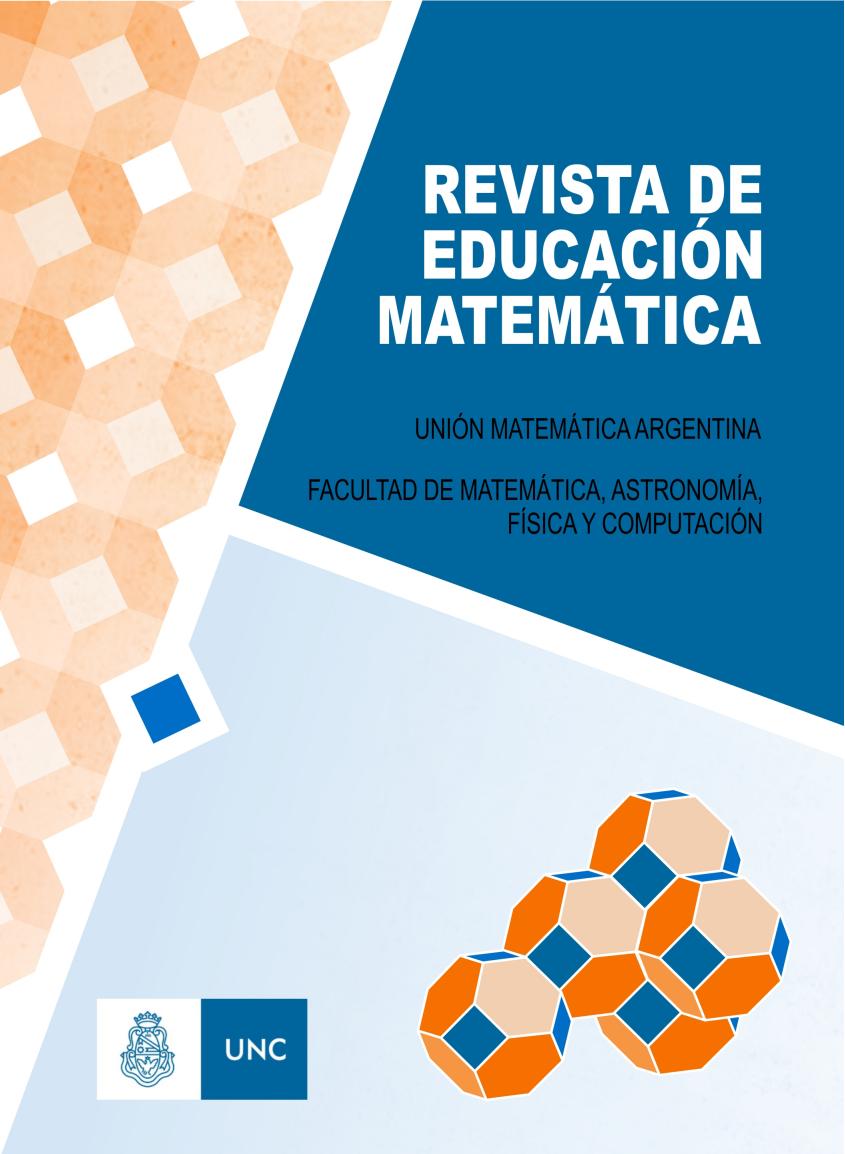Teaching geometry in high school: Didactic materials to favor the study of geometric figures or solids
DOI:
https://doi.org/10.33044/revem.34268Keywords:
Geometry, Proportionality, Similarity, Didactic materialAbstract
High school students knew about the mathematical concepts in different ways during their school trajectory. And, if they do not have the possibility of facing challenging problems in order not only to decide which of those concepts to use to solve them, but also to remedy the mistakes that appear in their productions, it is very likely that they may have difficulty making sense of them. One of the most frequent errors that appear in the resolution of geometric problems is related to the application of direct proportionality to calculate perimeters and areas of geometric figures or areas and volumes of geometric objects when one or more of their linear dimensions vary. Considering the aforementioned, this work tries to share teaching situations that were proposed to high school students. They are based on the construction of geometric figures and geometric shapes of different sizes and forms in order to favor, though their use as didactic material, the learning of contents related to proportionality and similarity.
Downloads
References
Alsina, C., Burgués, C., y Fortuny, J. M. (1988). Materiales para construir la geometría. Madrid: Editorial Síntesis S.A.
Area, M., Parcerisa, A., y Rodriguez, J. C. (2010). Materiales y recursos didácticos en contextos comunitarios. Barcelona: Editorial Grao.
Bressan, A. M., Bogisic, B., y Crego, K. (2006). Razones para enseñar geometría en la educación básica. Mirar, construir, decir y pensar... Buenos Aires: Ediciones Novedades Educativas.
Coriat, M. (1997). Materiales, Recursos y Actividades: Un panorama. En L. Rico (Ed.), La educación matemática en la enseñanza secundaria (p. 155-178). Barcelona: Horsori.
de Guzmán, M. (2010). El rincón de la pizarra: ensayos de visualización en análisis matemático: elementos básicos del análisis. Madrid: Ediciones Pirámide.
Duval, R. (2006). Un tema crucial en la educación matemática: la habilidad para cambiar el registro de representación. Gaceta de la Real Sociedad Matemática Española, 9(1), 143–168. Descargado de https://gaceta.rsme.es/abrir.php?id=546
Giarrizzo, A. (2007). ¿Proporcional o no proporcional? Construcciones geométricas con sentido. Novedades Educativas, 18(195), 66-70.
Giarrizzo, A. (2016). Relaciones espaciales y cuerpos geométricos. Resolución de problemas matemáticos en el nivel inicial. (N° 103). Buenos Aires: Novedades Educativas. Colección 0 a 5, la educación en los primeros años.
Gimeno Sacristán, J. (2001). Docencia y cultura escolar. Reformas y modelos educativos. Buenos Aires: Lugar Editorial.
González Marí, J. L. (2010). Recursos, Material didáctico y juegos y pasatiempos para Matemáticas en Infantil, Primaria y ESO: consideraciones generales. Descargado de https://bit.ly/3ijOnSV
Hernán, F., y Carrillo, E. (1988). Recursos en el aula de matemáticas, (34). Madrid: Editorial Síntesis. Colección Matemáticas: Cultura y Aprendizaje.
Sadovsky, P. (2005). Enseñar Matemática hoy. Miradas, sentidos y desafíos. Buenos Aires: Libros del Zorzal.
Downloads
Published
How to Cite
Issue
Section
License

This work is licensed under a Creative Commons Attribution-ShareAlike 4.0 International License.
Aquellos autores/as que tengan publicaciones con esta revista, aceptan los términos siguientes:
- Los autores/as conservarán sus derechos de autor y garantizarán a la revista el derecho de primera publicación de su obra, el cuál estará simultáneamente sujeto a la Atribución-CompartirIgual 4.0 Internacional (CC BY-SA 4.0), que permite:
- Compartir — copiar y redistribuir el material en cualquier medio o formato
- Adaptar — remezclar, transformar y construir a partir del material
- La licenciante no puede revocar estas libertades en tanto usted siga los términos de la licencia
- Los autores/as podrán adoptar otros acuerdos de licencia no exclusiva de distribución de la versión de la obra publicada (p. ej.: depositarla en un archivo telemático institucional o publicarla en un volumen monográfico) siempre que se indique la publicación inicial en esta revista.
- Se permite y recomienda a los autores/as difundir su obra a través de Internet (p. ej.: en archivos telemáticos institucionales o en su página web) después del proceso de publicación, lo cual puede producir intercambios interesantes y aumentar las citas de la obra publicada. (Véase El efecto del acceso abierto).










